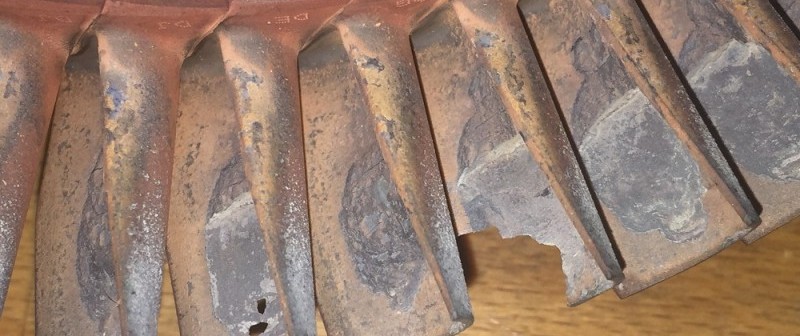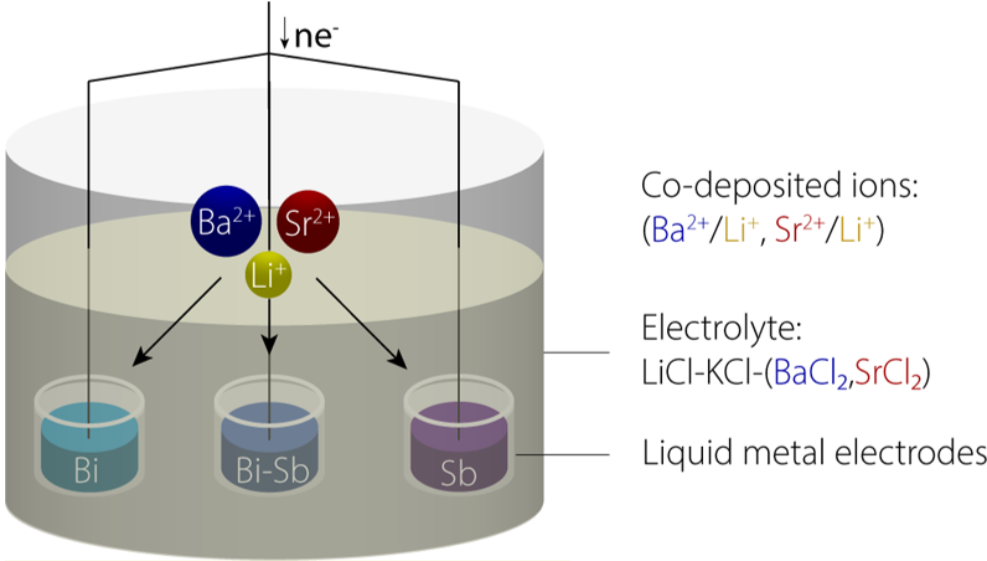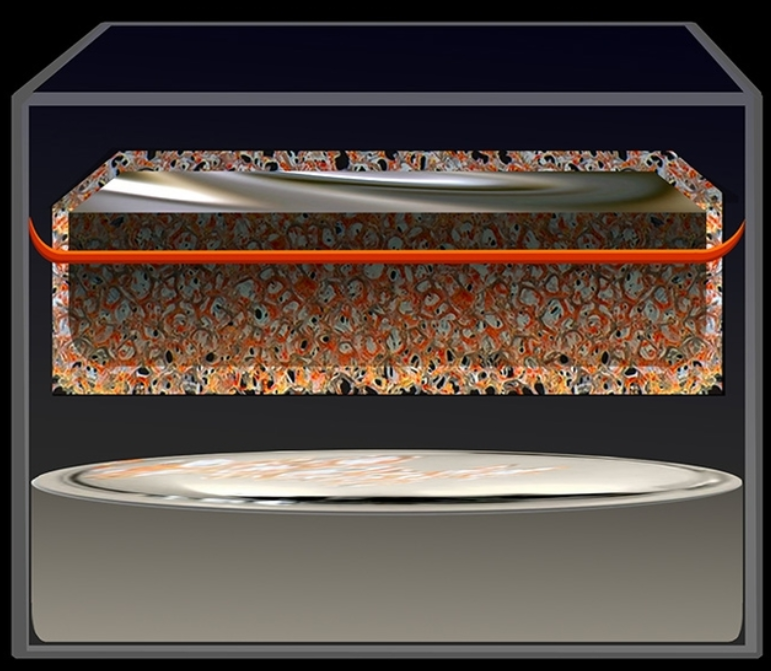Molten Salt Electrochemistry

Source: https://www.euravia.aero/news/what-is-sulphidation
Understanding Alloy Chemistry for Enhanced Environmental Resistance
The operating temperature of turbines (e.g. gas turbines, jet engines) have increased to up to 1200°C over the past few decades. As these hotter Ni-based turbine parts are exposed to atmospheric particulates (e.g. SO2) at higher temperatures, they experience accelerated hot corrosion. Various alloying elements, including Cr, Pt, and Hf, have demonstrated initial success in improving corrosion properties of Ni-based alloys when exposed to molten sulfates. This research is focused on using thermodynamic and kinetic properties of alloying elements to understand the mechanism by which alloying elements improve alloy corrosion properties.
Principal Investigator | Hojong Kim

Separation of Fission Products from Molten Salts
There are over 80,000 metric tons of nuclear waste that accumulates in different locations across the United States, and a great amount of this waste can be recycled into new fuel for nuclear energy. Currently during the recycling process, some fission products such as barium and strontium build up in the process’s electrolyte, increasing costs and decreasing efficiency. This research is focused on using liquid metal electrodes to remove these fission products and understanding the underlying thermodynamic and electrochemical properties of their interactions.
Principal Investigator | Hojong Kim
Publications: Summary | Multication Recovery | Sr-Sb EMF | Sr-Pb EMF | Ba-Sb EMF | Ba-Pb EMF | Video S.O.P.

Liquid Metal Batteries
Grid-scale energy storage is imperative to promoting widespread penetration of renewable energy sources into the electrical grid. One long-term energy storage technology is the liquid metal battery, an electrochemical cell with no mechanical moving parts and low capacity fade rate, leading to operating lifetimes of 20-30 years. Constructing containment of the active battery components requires novel engineering solutions, including a high temperature, corrosion resistant seal to store the active components under an inert atmosphere. This work focused on developing one part of the seal, a ceramic insulator, that is resistant to high temperature degradation, resistant to oxidation, and resistant to corrosion from moisture and cell contents.
Principal Investigator | David Bradwell | AMBRI
